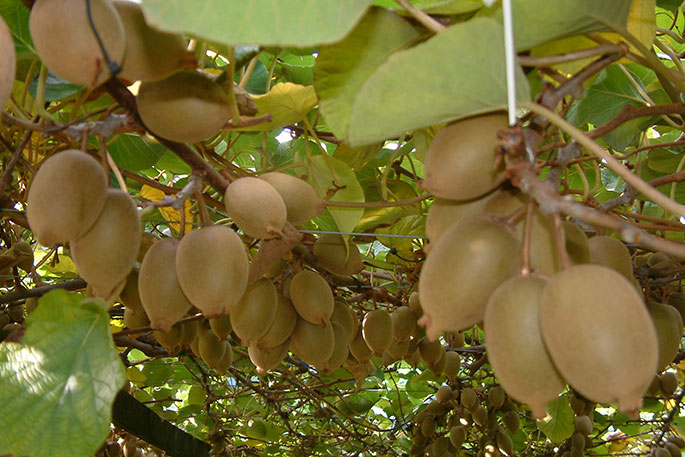New Zealand is the third largest producer of kiwifruit in the world behind China and Italy, and despite the global pandemic, kiwifruit exports have shown no sign of slowing.
In 2019, 149 million trays of green kiwifruit were produced for export. And the gold variety on supermarket shelves known as Zespri Sun Gold rose from 67 million trays to 75 million in 2020, proving popular with its smooth skin and perfect oval appearance.
But the road to the success of the Zespri Sun Gold variety has been bumpy.
In November 2010, the HORT 16A gold variety, was ravaged by the bacterial disease PSA. This variety of gold kiwifruit was smaller in size and had a flat, almost woody beak.
The disease spread like wildfire.
"The general consensus is that PSA was imported on pollen," says award-winning scientist at Plant and Food Research professor Russell Lowe, who this year was awarded the Plant Raiser's Award by The Royal New Zealand Institute of Horticulture.
Very little was known about the disease in 2010, including how it behaved or travelled, and how fast it could spread.
"It was pretty nerve-racking at the time," says Russell.
The news of PSA hit media headlines almost as quickly as the bacteria spread across the country.
"Once PSA spread from the original site across the Bay of Plenty and arrived on the Te Puke Orchard, visible signs of infection were seen right throughout the plants," he says.
Very little was known about the disease in 2010, including how it behaved or travelled, and how fast it could spread.
"It was pretty nerve-racking at the time," says Russell.
The news of PSA hit media headlines almost as quickly as the bacteria spread across the country.
"Once PSA spread from the original site across the Bay of Plenty and arrived on the Te Puke Orchard, visible signs of infection were seen right throughout the plants," he says.
"One of our researchers did some forecasting based on the number of plants that were dying over a short period and estimated that within a year or two there wouldn't be a single kiwifruit plant left," says Russell.
PSA spreads rapidly, especially during rain and the symptoms include wilting young shoots and visible die back in the canopy. And as the bacteria begins to multiply, red ooze begins flowing from mature branches.
Kiwifruit growers across the country were sent into a state of panic. And with approximately 100 scientists across the country working on ways to eliminate the disease, the only way to contain the spread of the bacteria was to eradicate any plants showing signs of disease.
Jeff Roderick is one of New Zealand's leading organic kiwifruit growers based in Te Puke and says his orchard was one of the first to be affected by PSA.
In fact, the centre of the inflection was a kilometer from the orchard he runs with his wife, Shirley.
Some growers had chopped the vines and left them on the ground, but little did they know, it was allowing the disease to spread.
With no cure in sight and orchardists moving at speed to protect their healthy vines, Jeff took a drastic approach.
"We cut out everything as soon as we realised we couldn't get the vines through the season...we burnt and buried vines," he says.
And because the vines spread over a vast area, it was also difficult for growers to stop the spores from finding their way into covered areas.
"You're dealing with spores moving around the atmosphere and they move around pretty fast," says Jeff.
Over three years gold kiwifruit virtually disappeared from supermarket and green grocer shelves with exports of gold kiwifruit dropping from 30 million in 2010 to 11 million trays in 2014.
But even today, PSA hasn't been fully eradicated and growers are careful to follow strict management guidelines.
"You find [the spores] in outer space, so it was never going to not spread," Jeff says



0 comments
Leave a Comment
You must be logged in to make a comment.